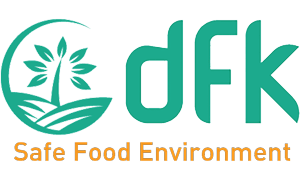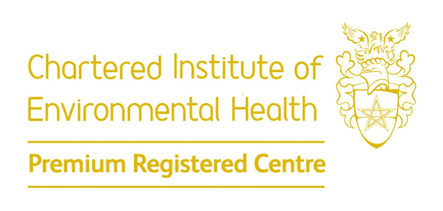Food labels review for entry to the US, EU and UK markets.
Avoid the mistake of assuming HACCP and GFSI compliance will meet the FSMA requirements
Thursday, 08 October 2020
by Dr Faour Klingbeil
I have met recently with few representatives from the food industry and it appeared from our discussions that many were still unaware of the difference between the GFSI certification and FSMA compliance. For them, both equate, and the only steps required to export foods to the US market is to go through the registration process. There was some confusion about the mandatory requirement to develop and implement a Food Safety Plan (FSP) which was assumed to be the same as their existing HACCP plan, which is not the case. Certification to a GFSI-benchmarked scheme (BRC, SQF, FSSC22000, IFS, etc.) and having an HACCP plan do not make the food facility compliant with the FSMA Preventive Controls Rule, yet it does make it ready to reach compliance. While HACCP focuses on the determination of the Critical Control Points (CCPs) to prevent post-process contamination, under FSMA, the FSP goes far beyond the determination of the CCPs during processing to include risk-based preventive controls that are determined as critical elements in the sanitation and allergen control programs, and in the supplier chain program. The FSP must be created and overseen by a preventive controls-qualified individual (PCQI) and should be based on: 1- Hazard Analysis, identifying known or reasonably foreseeable biological, chemical, radiological and physical hazards 2- Documentation (written) of preventive controls including process controls, food allergen controls and sanitation controls, supply chain controls, and a recall plan 3- Documented implementation procedures which include monitoring the implementation of the preventive controls, corrective action, and verification procedures. To export foods to the US market, It is mandatory to develop the Food Safety Plan that is compliant with FSMA Preventive Rule, NOT with HACCP The difference between HACCP and GFSI compliance or to FSMA might not be practically easy to grasp without a PCQI training. Why it is important to train PCQIs? Under the FSMA rule, FDA is permitted to inspect domestic and foreign facilities (those based on non-US territories) at the times and in the manner permitted by the FD&C Act. As part of this, the FSP is inspected for its adequacy and any deficiencies or inadequacies identified means the PCQI (individual who developed the FSP) is not appropriately trained for the application of the risk-based preventive controls. The difference between HACCP / GFSI compliance and FSMA might not be practically easy to grasp without a PCQI training What may result out of this? In the event of having an inadequate food safety plan developed by unqualified staff, various scenarios are possible depending on the severity of the identified failure or if the food presents a threat of serious adverse health consequences or death to humans. Therefore, the FDA can take actions such as: suspension of the food facilities’ registration, product detention, issuing a warning letter and criminal charges and add to this the costly re-inspection visits. The cost for a foreign facility is $285 per hour. Ensuring the FSP is prepared and overseen by a trained PCQI is certainly an added value and crucial to avoid the above mistakes. To help the food industry complies with the requirements of the Preventive Controls rules, the Food Safety Preventive Controls Alliance (FSPCA) developed the FDA-approved standardized curriculum for training PCQIs. As a PCQI Lead Instructor, I am offering public and in-house FSPCA certified PCQI training. For more information on locations and dates, please follow the link here and navigate the calendar. You are welcome to subscribe to the newsletter to keep you updated on the PCQI training that will be organized in Germany and selected countries in the MENA region for the year 2019.
- Published in FSMA
How Does HARPC system differ from HACCP
Sunday, 26 April 2020
by Dr Faour Klingbeil
“What is the difference between the Hazard Analysis and Critical Control Points (HACCP) and the Hazards Analysis and Risk-Based Preventive Controls (HARPC)?” is a question we often hear from professionals working in the food industry and expected to be raised more often having been involved in managing the food safety systems based on the HACCP concept which is universally accepted by government agencies, trade associations and the food industry around the world ( NACMCF, 1997). HACCP is based on the analysis and control of biological, chemical, and physical hazards from raw material production, procurement and handling, to manufacturing, distribution and consumption of the finished product in order to reduce the risks of safety hazards in food. It is based on 7 principles: Principle 1: Conduct a hazard analysis.Principle 2: Determine the critical control points (CCPs).Principle 3: Establish critical limits.Principle 4: Establish monitoring procedures.Principle 5: Establish corrective actions.Principle 6: Establish verification procedures.Principle 7: Establish record-keeping and documentation procedures The HARPC is based on these same basic food safety principles; more specifically, it recognizes the importance of hazards analysis and setting critical limits to monitor the control points; it emphasizes the corrections/corrective actions, verification activities and the recall plan. The preventive approach is not recent, it dates back to the 60’s when the HACCP was pioneered by the Pillsbury corporation to ensure food safety for the first manned National Aeronautics and Space Administration space missions. NASA’s main concerns were to ensure safe food for astronauts. The WHO Europe recommended the system in 1983 and the Codex released the first HACCP Guidelines which was revised in 2001 and adopted by the FAO/WHO Codex Alimentarius Commission. The U.S.National Advisory Committee on Microbiological Criteria for Foods (Committee) reconvened a Hazard Analysis and Critical Control Point (HACCP) Working Group in 1995. The primary goal was to review the Committee’s November 1992 HACCP document, comparing it to current HACCP guidance prepared by the Codex Committee on Food Hygiene. The Committee again endorses HACCP as an effective and rational means of assuring food safety from harvest to consumption. NACMCF issues the third revision document in 1997. Basically, the HACCP was integrated into the official regulations in the European Union and the United States. For instance, the U.S. Food and Drug Administration adopted HACCP in low acid canned foods, then the FDA mandated HACCP for seafood products and in 2001 for juice processors. The Council Directive no. 91/493/EEC places the responsibility of product safety on the industry as it introduced the concept of ‘own checks’ and Critical Control Points during processing and the Commission Decision 94/356/EEC details the rules for the application of the HACCP system. The term HARPC goes back to 2011, when the Food Safety Modernization Act (FSMA) was signed into law by President Barack Obama. FSMA directs FDA to establish standards for adoption of modern food safety prevention practices by those who grow, process, transport, and store food. In 2015, FDA has finalized seven major rules to implement FSMA; the Hazards Analysis Risk-Based Preventive Controls for Human food is one of those 7 rules which is also referred to as The Preventive Controls for Human Food (PCHF). The Hazards Analysis Risk-Based Preventive Controls for Human food (HARPC) requirements specify that a facility must prepare, or have prepared, and implement a written food safety plan (FSP) (21 CFR 117.126). The elements of the FSP are (21 CFR 117.126(b)): Hazard analysis Preventive controls (see 21 CFR 117.135), as appropriate to the facility and the food, to ensure safe food is produced, Procedures for monitoring the implementation of the preventive controls, as appropriate to the nature of the preventive control and its role in the facility’s food safety system Corrective action procedures, as appropriate to the nature of the hazard and the nature of the preventive control Verification procedures, as appropriate to the nature of the preventive control The preventive controls approach to controlling hazards used in an FSP is developed based on the risk-based HACCP principles as described by the National Advisory Committee on Microbiological Criteria for Foods It is important to note that the preventive controls approach to controlling hazards used in an FSP is developed based on the risk-based HACCP principles as described by the National Advisory Committee on Microbiological Criteria for Foods. Therefore, there are similarities between the FSP and a HACCP plan and the similarities are in the essence of both systems; both adopt the preventive approach , yet there are few differences. Table 1 shows the different elements required in each of the plan and how they differ: In HARPC, A “hazard” is any biological, chemical (including radiological), or physical agent that has the potential to cause illness or injury. These include hazards that occur naturally, that are unintentionally added or that may be intentionally added to a food for purposes of economic gain (i.e., economic adulteration). Contaminants that have no direct impact on the safety of the products are considered “undesirable defects” and do not require a preventive control, hence they should not be included in the FSP. Once the hazards requiring preventive controls are identified in the Hazard analysis, the FSP should include documentation of the preventive controls that were determined as appropriate to controlling the hazards. The preventive controls include: Process controls Food allergen controls Sanitation controls Supply-chain controls Recall plan Other controls The CCP is a point, step or procedure at which controls can be applied and a food safety hazard can be prevented, eliminated or reduced to acceptable (critical) levels. In a HACCP plan, the CCPs are steps in the process that are always monitored, whereas in the FSP, not all preventive controls are CCPs (Process controls), hence the preventive controls are only monitored as appropriate to the nature of the preventive control and its role in the facility’s food safety system. That means some preventive controls that are not necessary applied at CCPs may not be monitored such as the supply chain preventive control and recall plan. The FSP incorporated the element “corrections” in addition to
- Published in FSMA
Prevalence of antimicrobial – resistant Escherichia coli from raw vegetables in Lebanon
Sunday, 08 September 2019
by Dr Faour Klingbeil
Fresh produce has been implicated in a number of documented outbreaks of foodborne illness caused by bacteria, viruses, and parasites. Shiga toxin-producing Escherichia coli (STEC) have been detected on vegetables, raising concerns about the prevalence of E. coli contamination in produce, which can take place at various points from farm to fork. The prevalence of antimicrobial-resistant E. coli and potential transmission from soils and in the animal production environment to fresh produce at harvest has been documented, as has the further flow of resistance from fresh produce bacteria via gene transfer to enterobacterial strains in humans.The most common route for fresh produce contamination is at the pre-harvest stage, when microorganisms from animal feces, contaminated irrigation water, and wild and domestic animals can be deposited in crops. Even though foodborne disease outbreaks due to contamination of fruit and leafy green vegetables with pathogens have been rarely documented in Lebanon or the whole Middle East Region, they undoubtedly occur based on surveillance data from other regions. Therefore, the study aimed to detect the presence of STEC and multidrug-resistant (MDR) E. coli on fresh vegetables and water from different sources along the fresh produce supply chain in Lebanon. The virulence genes stx1 and stx2 were not detected in any of the isolates. However, resistance to streptomycin and a first-generation cephalosporin (represented by cephalothin) was observed among all the 60 isolates (100%). The second-largest prevalence of resistant isolates was observed with ampicillin (78%). More than a third of the study isolates were resistant to tetracycline (42%). Moreover, resistance to three or more antimicrobials in 60% of the isolates . It is postulated that the inadequate post-harvest washing contributed to transmission of antimicrobial-resistant E. coli at wholesale and retail levels. The present study demonstrated that fresh vegetables harbor MDR E. coli and their consumption poses risks of increasing the reservoir of antimicrobial resistance in the intestines of the Lebanese population. Greater emphasis should be placed on vigilant sanitation measures at the consumption level, and effective national risk mitigation strategies are crucial to minimize fecal contamination in the early stages of production, particularly in the post-harvest washing processes.
- Published in Ready to eat vegetables
- 1
- 2








